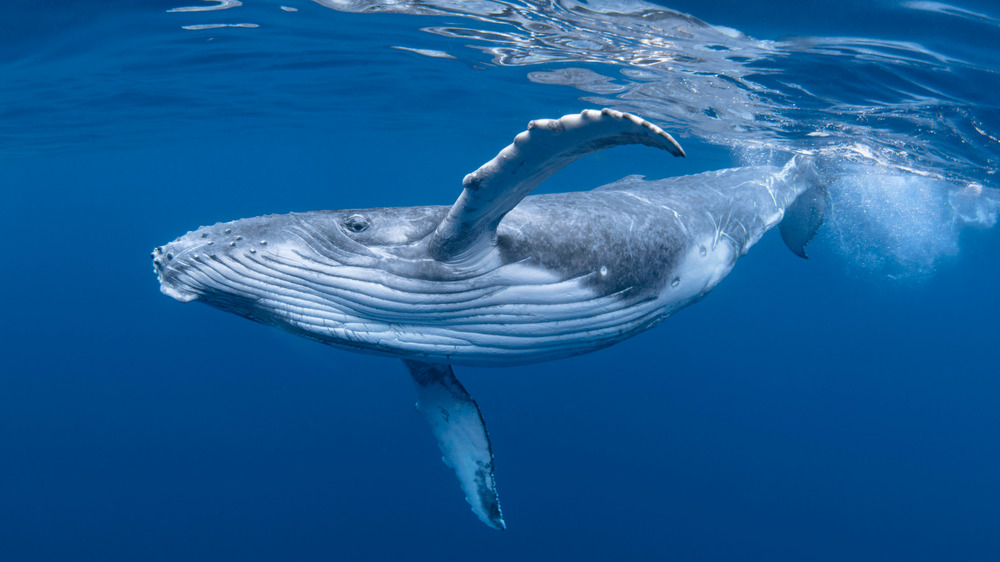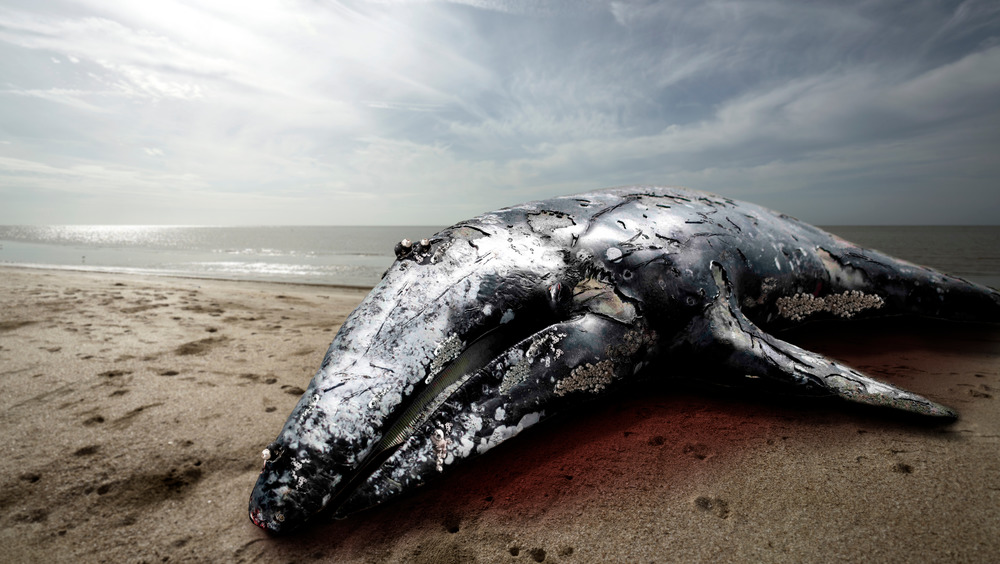The Messed Up History Of Dead Whales And Arthritis
Per Medical News Today, rheumatoid arthritis is "an autoimmune disease in which the immune system mistakenly attacks healthy tissue in the joints." It's a chronic condition that causes pain, swelling, and joint mobility issues, and while there are treatments, there is no cure. Modern medicine can slow down the disease's progression and help alleviate its uncomfortable effects. As reported by Everyday Health, prescription medications such as disease-modifying antirheumatic drugs, nonsteroidal anti-inflammatory drugs, and "biologics" that block the body's inflammatory chemicals can go a long way in helping people live more comfortably with rheumatoid arthritis. This is a particular relief when one considers that at one point in medical history, a popular method of treating rheumatoid arthritis involved afflicted patients sitting inside whale carcasses.
According to Smithsonian, this bizarre (and gross) treatment is thought to have been accidentally discovered in 1896. Smithsonian cites a New York Times report about "a gentleman of convicial habits but grievously afflicted with rheumatism" who had come across a whale carcass on the beach and, much to the horror of his friends, decided to get inside. Upon exiting the dead whale "the rhemuatism from which he had been suffering for years had entirely disappeared." Apparently news of this "miracle cure" spread, and the city of Eden, Australia became a sort of hub for spa vacations, with "spa" defined as sitting inside a dead whale for up to 30 hours.
A whale of a medical treatment
The treatment was rumored to bring a year's worth of relief from rheumatism to anyone willing to endure the hot, smelly experience of sort of being swallowed by a whale, albeit a dead one.
According to the Australian National Maritime Museum, relief from arthritic pain came from "heat and gases produced by the decomposing whale combined to create a 'sweat box' environment." Despite the cure first coming to widespread mainstream attention in 1894, anthropologist R.H. Mathews wrote an article in 1904 in which he observed that Aboriginal people of Eden would remove meat and blubber from a whale and then " lower themselves into the body and cover themselves with whale fat to treat their pain." Rock carvings thought to depict Aboriginals taking the whale cure may be seen in Waverton, Australia, per the Australia National Telescope Facility. As is so often the case, this appears to be a situation in which Native traditions and knowledge were "discovered" by white colonists who then went on to take credit for the idea, publicize it, co-opt it, and use it to make money.
The "whale cure" was seldom seen in Eden after World War I, possibly because of the decline of whaling in general, but possibly because of the unpleasant aftereffects of taking the cure: "the patient for a week or so gives off a horrible odour, and is abhorrent to man and beast, and a fit subject for prosecution under the 'Diseased Animals and Meat Act'."

